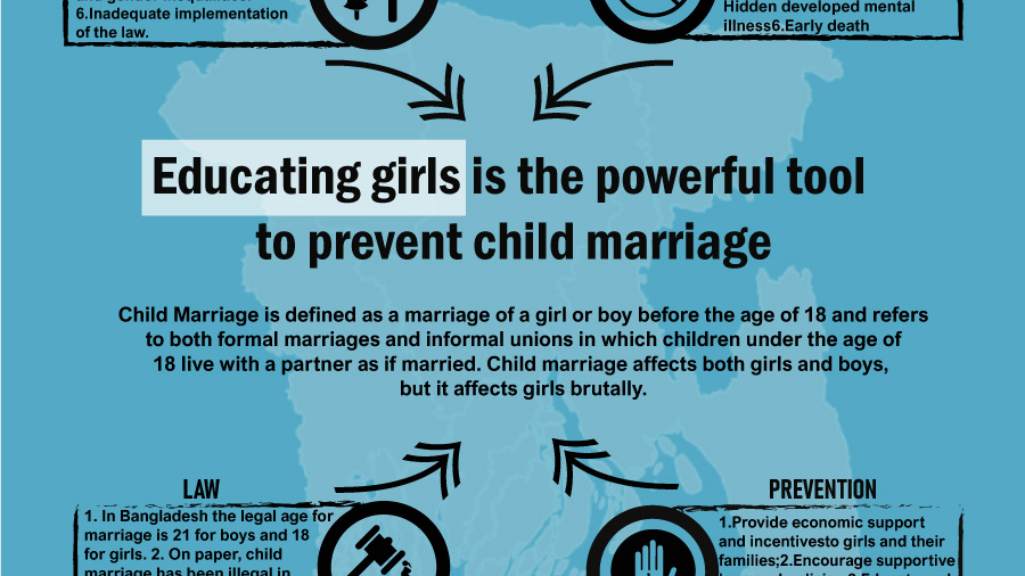Child Marriage: A Global Challenge to Childhood Rights and Development
Devin Barton
. 2 min read
Child marriage, a practice in which a child, usually under the age of 18, is married to an adult, continues to be a pressing global issue affecting millions of girls and, to a lesser extent, boys. This age-old tradition, deeply rooted in cultural, social, and economic norms, poses serious threats to the well-being and development of young individuals. Despite significant efforts to combat child marriage, it remains prevalent in various parts of the world, perpetuating cycles of poverty, gender inequality, and human rights violations. To address this challenge, innovative approaches such as cam chat have been introduced to provide support, counseling, and guidance to at-risk children, empowering them to break free from the chains of early marriage and make informed decisions about their lives.

Significant Efforts to Combat Child Marriage
Prevalence of Child Marriage
Child marriage is not confined to any specific region or culture; it exists in various countries across the globe. According to the United Nations Children's Fund (UNICEF), over 650 million women and girls alive today were married before the age of 18. Sub-Saharan Africa and South Asia are particularly affected, with countries like Niger, Bangladesh, and India reporting high child marriage rates.
Causes and Factors Contributing to Child Marriage
Numerous factors contribute to the prevalence of child marriage, and these may vary across regions. Some of the primary causes include:
a) Poverty: Families in impoverished communities may view child marriage as a means to reduce the financial burden of raising a child and gain financial security through the bride's dowry.
b) Gender Inequality: Societies that perpetuate patriarchal norms may consider girls as economic liabilities and prioritize early marriage to safeguard their honor and control their behavior.
c) Lack of Education: Limited access to education, particularly for girls, perpetuates the cycle of child marriage. When girls are denied an education, they are more likely to be married off at a young age.
d) Tradition and Cultural Norms: In many communities, child marriage is deeply ingrained in tradition and cultural practices, making it challenging to challenge or change.
Impact on Child Rights and Well-being
Child marriage has profound and lasting consequences on the lives of young individuals:
a) Health Risks: Child brides are more susceptible to various health risks, including early pregnancy complications, maternal mortality, and sexually transmitted infections due to their bodies being unprepared for childbirth.
b) Limited Educational Opportunities: Early marriage often disrupts a girl's education, perpetuating a cycle of illiteracy and limiting future opportunities for personal growth and economic empowerment.
c) Psychological Impact: Child brides may experience psychological trauma and stress as they are forced into adult roles before they are emotionally mature enough to handle them.
d) Gender Inequality: Child marriage perpetuates gender inequality, as it reinforces the notion that girls are lesser beings with limited control over their lives.
Efforts to Combat Child Marriage
Recognizing the detrimental effects of child marriage, governments, non-governmental organizations, and international bodies have been working tirelessly to address the issue. Key efforts include:
a) Legislative Reforms: Many countries have implemented laws and policies to raise the minimum age of marriage and enforce penalties for those involved in child marriages.
b) Education and Awareness: Raising awareness about the consequences of child marriage and promoting education for both girls and boys can help challenge traditional beliefs and societal norms.
c) Economic Support: Providing economic incentives and support to families can help mitigate the financial pressures that lead to child marriage.
Conclusion
Child marriage remains a significant global challenge that requires a multi-faceted approach. Through legislative reforms, education, and raising awareness, societies can work together to safeguard the rights and well-being of children, empowering them to reach their full potential and contribute positively to their communities and the world at large.
More Stories from
India's New Parliament Bhavan: An Icon of Modernity and Functionality
The New Parliament Bhavan is a cutting-edge architectural marvel in New Delhi, India, serving as the modernized hub of the nation's democracy.
Mastering Social Etiquette: Essential Tips for Polished Social Skills
It emphasizes the importance of being knowledgeable about social etiquette and paying attention to subtleties to avoid awkward situations.
Power and Pitfalls of Celebrity Endorsements in Politics
The article explores the role of celebrities in politics, focusing on their influence in India and Pakistan.





.png?width=40&aspect_ratio=1:1)




.png?width=40&aspect_ratio=1:1)